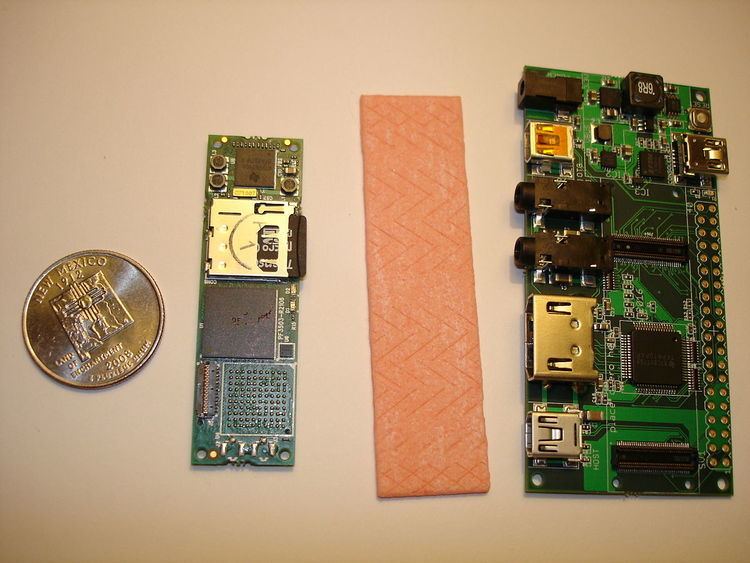 | ||
A stick PC or PC on a stick is a single-board computer in a small elongated casing resembling a stick, that can usually be plugged directly (without an HDMI cable) on an HDMI video port. A stick PC is a device which has independent CPU or processing chips and which does not rely on another computer. It should not be confused with passive storage devices such as thumb drives.
A stick PC can be connected to a peripheral device such as a monitor, TV, or kiosk display to produce visual or audio output.
History
Gumstix is probably the first Stick PC, since it came out in 2003. It used the ARM architecture System on a chip (SoC) and uses the Linux 2.6 kernel. Windows CE can be installed on this stick. It was created based on the idea of a PC similar in size to that of an average stick of gum.
Most Stick PCs are still based on the ARM architecture.
The Stick PC was first introduced around 2003. Some examples of Stick PCs are: The Android Mini PC MK802 series from Rikomagic, using Android or GNU/Linux distributions, both based on Linux and Allwinner Technology or Rockchip SoC, Cotton Candy, using Samsung Exynos SoC, and the Fire TV Stick are just some examples.
In July 24 2013, Google introduced the Google Chromecast.
In April 2013, Tronsmart released the MK908, using Rockchip RK3188 (featuring the quad-core ARM Cortex-A9 and ARM Mali-400MP GPU).
In 2013 a small Chinese company called "MeeGoPad" released the first x86 based Stick PC, featuring the Intel© Atom™ Z3735F Processor.
In March 2015, Asus and Google introduced the Chromebit, a stick PC based on the Rockchip RK3288 SoC and running Google's Chrome OS.
As of 2016, Intel Compute Stick is considered one of the first Intel x86 based Stick PCs.
